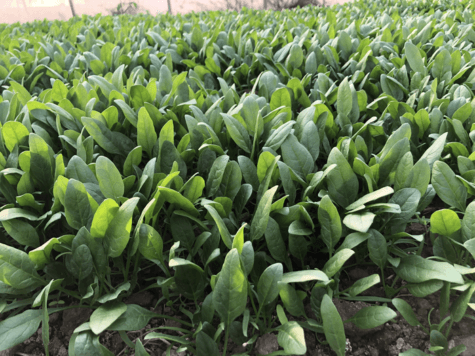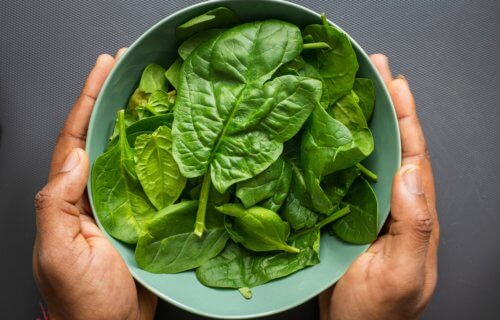ITHACA, N.Y. — Spinach fans may love the healthy benefits of eating this superfood, but they’re also familiar with the annoying, gritty, and chalky mouthfeel it leaves them with afterwards. Now, scientists may finally be able to remove the plant genes which give many people “spinach teeth.”
A team from the Boyce Thompson Institute (BTI) and six Chinese universities say they found the genes in spinach that regulate how much oxalate the leafy green contains. This compound, which is also abundant in beans, has its pros and cons. While it causes people to have “spinach teeth,” it also plays a key role in fighting off downy mildew — a major disease in crops.
Finding out what controls levels of oxalate in crops may allow scientists to engineer more appealing brands of spinach which don’t give eaters that chalky mouthfeel.
“I think more consumers would be willing to buy spinach that has less oxalate,” says BTI faculty member and study co-leader Zhangjun Fei in a media release. “Dietary oxalate can interfere with mineral absorption and may lead to kidney stones, and less oxalate would also make spinach more palatable to a wider market.”
Study authors add that the discovery may also help farmers produce even more disease-resistant varieties of spinach. In this study, they compared the genomes of both cultivated (Spinacia oleracea) and wild varieties (S. turkestanica and S. tetranda) to find the genetic traits which would be most important to both farmers and consumers.
“Our results provide rich resources for the spinach community, especially those working on increasing downy mildew resistance, improving leaf texture and reducing oxalate content,” adds co-corresponding author Chen Jiao, a professor in the College of Agriculture and Biotechnology at Zhejiang University.
Changes in spinach come mostly from moving around the world

Researchers sequenced the genomes of 295 cultivated varieties of S. oleracea and 10 groups of the two wild varieties during this study. In both comparative genomic analyses and genome-wide association studies (GWAS), the team found that most of spinach’s genetic differences come from the plant’s adaptation to new environments — as humans brought the crop with them from Asia to Europe.
A few of the variations also reflect the local preferences of the people producing the leafy green, including flat or wrinkled leaves.
“I think our most interesting finding is that the genetic diversity between Asian and European spinach is higher than it is between cultivated and wild spinaches, which is not very common in other crops,” Jiao says. “This increases our knowledge of how human selection diversifies crop plants.”
The study also confirmed the role of the NBR-LRR family of genes in spinach, which fight off downy mildew. Moreover, scientists identified areas along spinach’s genome which play smaller-but-still-important roles in plant disease resistance. These areas include a “promoter region” in the gene WSD6, which encodes the enzyme that reinforces the waxy physical barrier spinach leaves use to keep pathogens away.
“Like most plants, disease resistance in spinach is controlled by a network of genetic regions,” Fei explains. “If you can ‘stack’ disease-resistant gene variants into one variety then you will get better resistance than with just one gene variant.”
Balancing mouthfeel with disease prevention will be tricky
When it comes to better mouthfeel, researchers say they found two genes which encode metal and metal ion transporters. They believe this process is what regulates how much oxalate spinach has. When you lower that amount, the chalky aftertaste goes away.
Although the study findings reveal the blueprint for making spinach tastier, the team cautions that this will be a difficult balancing act for geneticists. Since oxalates are also vital to disease resistance, taking them away makes spinach more vulnerable to pests and pathogens. Fei says scientists will have to find other genes in the crop which promote the plant’s disease-fighting properties and modify them too.
“Plants usually depend on networks of genetic factors to defend themselves; removing one means findings the right balance among the others,” Fei concludes.
The study is published in the journal Nature Communications.
